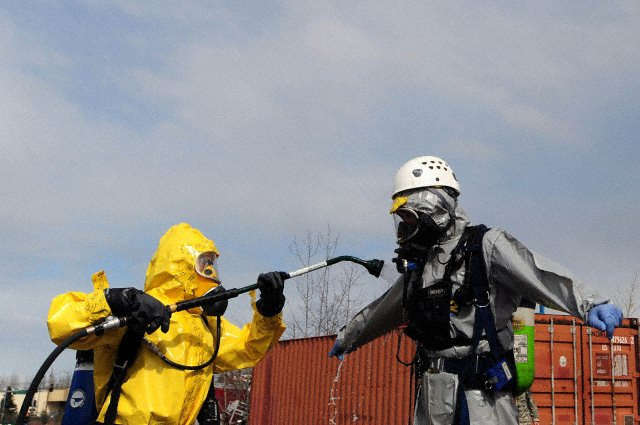The Occupational Safety and Health Administration (OSHA) has revised a guide that identifies eight mechanical motions and eight hazardous actions that present possible amputation hazards. The guide also sets forth steps employers can take to reduce these hazards. The material is appropriate for anyone responsible for the operation, servicing, and care of machines or equipment: employers, employees, safety professionals, and industrial hygienists. Topics covered in this document include hazard analysis, awareness devices, and hazardous energy (lockout/tagout), and safeguarding machinery. An excerpt follows:
Audit, Compliance and Risk Blog
OSHA: Safeguarding Equipment and Protecting Employees from Amputations
Posted by STP Editorial Team on Mon, Jul 28, 2014
Tags: Corporate Governance, Business & Legal, Health & Safety, OSHA, California Legislation, Training
EEOC Issues New Enforcement Guidance on Pregnancy Discrimination
Posted by Jon Elliott on Wed, Jul 23, 2014
One of the many national anti-discrimination laws administered by the US Equal Employment Opportunity Commission (EEOC) is the Pregnancy Discrimination Act of 1978 (PDA). PDA prohibits discrimination against women on the basis of “pregnancy, childbirth or related medical conditions.” EEOC receives about 6,000 complaints alleging this form of sex discrimination each year, which amounts to 6-7% of all complaints it receives. Last month EEOC issued its first stand-alone Enforcement Guidance for its staff to address PDA and related issues under the Americans with Disabilities Act (ADA), superseding discussions in the agency’s general Compliance Manual.
Tags: Corporate Governance, Business & Legal, Employer Best Practices, Employee Rights, EEOC
Supreme Court Narrows EPA Authority to Regulate CO2 Emissions
Posted by Jon Elliott on Mon, Jul 21, 2014
Since the US Supreme Court affirmed in 2007 that the Clean Air Act (CAA) provides the Environmental Protection Agency (EPA) with authority to regulate carbon dioxide (CO2) and other greenhouse gases (GHGs), EPA has pursued a growing set of regulatory initiatives. In each, EPA has attempted to fit GHGs into statutory and regulatory programs originally designed for more conventional pollutants – and the entities it targets have sued the agency claiming the stretch to GHGs exceeds EPA’s authority. Each court decision has adjusted the contours of EPA’s CAA authority, legitimizing some stretches and vacating others.
Tags: Corporate Governance, Business & Legal, Environmental risks, Environmental, EHS, EPA, Greenhouse Gas, ghg
Obama Directs Federal Agencies to Enhance Workplace Flexibility
Posted by Jon Elliott on Wed, Jul 16, 2014
On June 23, President Obama issued a Presidential Memorandum to federal agencies, specifying steps they must take to enhance workplace flexibility for federal workers, and specifying timelines for the federal Office of Personnel Management (OPM) and each federal agency to complete those steps. The Memorandum establishes OPM as the hub of these activities, with assignments to create guidance, synthesize information being provided by other federal agencies, and provide ongoing inter-agency advice. The Memorandum is careful not to create any new rights for federal employees, but it is intended to ensure that agencies expand their interpretations and applications of those rights to the maximum extent feasible.
Tags: Corporate Governance, Business & Legal, Employer Best Practices, Employee Rights
NTSB and PHMSA Focus on Facility Response Plans for Pipelines
Posted by Allison Campbell on Mon, Jul 14, 2014
Investigation of the 2010 spill at Marshall, Michigan, the largest on-land spill in US history, underlines the reality that a Facility Response Plan (FRP) is more than a government-required document—an inadequate document or plan can lead to environmental and economic disaster. Owners and operators of onshore pipelines must review and update FRPs every five years from the date of last submission or last approval, and whenever new or different operating conditions arise that would affect the plan. (49 CFR 194.121 Response Plan Review and Update Procedures). PHMSA recently released two Advisory Bulletins reminding operators what it requires in an FRP and listing five of the most common reasons for it to reject an FRP.
Tags: Corporate Governance, Business & Legal, Health & Safety, Environmental risks, Environmental, EHS, EPA, Greenhouse Gas, ghg, Hazcom, Oil & Gas, Transportation
Investigation of Construction Incidents to Reduce Injuries and Fatalities
Posted by STP Editorial Team on Thu, Jul 10, 2014
The Directorate of Construction, Occupational Safety and Health Administration (OSHA) has a website that provides original investigations of collapses and other incidents. Many of the incidents resulted in one or more worker fatalities, and most of them resulted in multi-million dollar property loss, lawsuits, or settlements. Each investigation was performed at the request of an OSHA field office or State Plan OSHA as part of an enforcement inspection.
Tags: Corporate Governance, Business & Legal, Employer Best Practices, Health & Safety, OSHA, Training, Environmental risks, Environmental
Supreme Court Tweaks “Fraud on the Market” in Securities Cases
Posted by Jon Elliott on Tue, Jul 08, 2014
Section 10(b) of the Securities Exchange Act of 1934 prohibits use of “any manipulative or deceptive device” in connection with purchases or sales of securities. Since its adoption, this provision has provided SEC with an important enforcement tool. Beginning in 1975, the US Supreme Court also empowered aggrieved shareholders to use this Section to support private lawsuits against alleged violators (Blue Chip Stamps v. Manor Drug Stores). The substantive and procedural contours of this private right have continued to evolve in the subsequent four decades, as courts address arguments by plaintiffs and defendants. In 1988, the Supreme Court ruled that plaintiffs who buy or sell shares through an “efficient market” are entitled to a presumption that they relied on that market’s price, not knowing that the market was tainted by manipulative or deceptive information (Basic, Inc. v. Levinson).
Tags: Corporate Governance, Business & Legal, SEC
Internet Law: New Anti-Spam Legislation Won’t Stop Most Spam
Posted by Nelson Bennett on Fri, Jul 04, 2014
Tags: Corporate Governance, Business & Legal, Training, Internet
Chemical Facility Safety–Progress Report on the President’s Executive Order
Posted by Jon Elliott on Wed, Jul 02, 2014
Last August, President Obama issued an Executive Order (EO 13650) to agencies with responsibilities for chemical facility safety (I blogged about it here). The EO provides for a Chemical Facility Safety and Security Working Group, co-chaired by the Department of Homeland Security (DHS, which administers the Chemical Facility Anti-Terrorism Standards (CFATS) program), Environmental Protection Agency (EPA, which administers the Accidental Release Prevention (ARP) program under Clean Air Act) and Department of Labor’s Occupational Safety and Health Administration (OSHA, which administers Chemical Process Safety Management (PSM) Standard), and also including the Departments of Transportation, Justice (DOJ) and Agriculture. It directs them to work together to improve their operational coordination, and to consult with other security and environmental agencies at all levels of government, as well as the White House.
Tags: Corporate Governance, Business & Legal, Health & Safety, Training, Environmental risks, Environmental, EPA, Hazcom
Four Management Approaches to Workplace Violence Prevention
Posted by Steve Albrecht on Mon, Jun 23, 2014
The best strategies for workplace violence prevention involve updated and enforced company policies; an awareness that real perpetrators don’t necessarily make direct threats to their targets; and the creation of Threat Assessment Teams to manage situations successfully. These four management interventions can help those efforts as well.
Tags: Corporate Governance, Business & Legal, Employer Best Practices, Employee Rights, Training, Workplace violence










